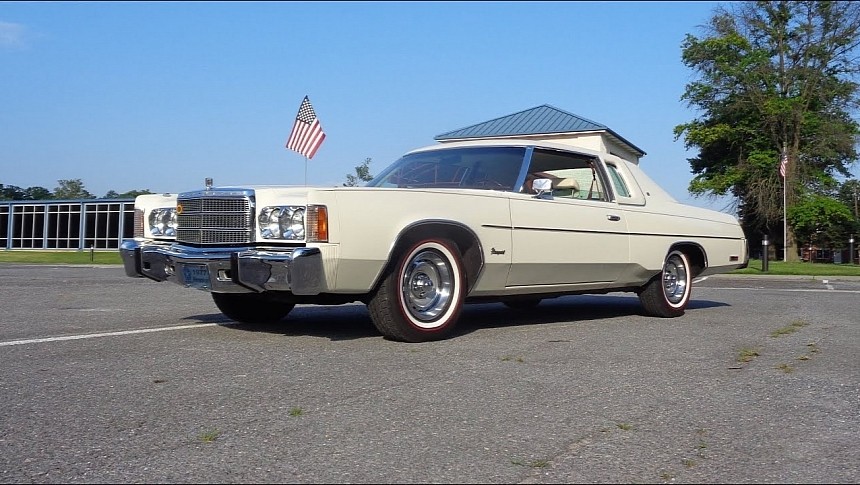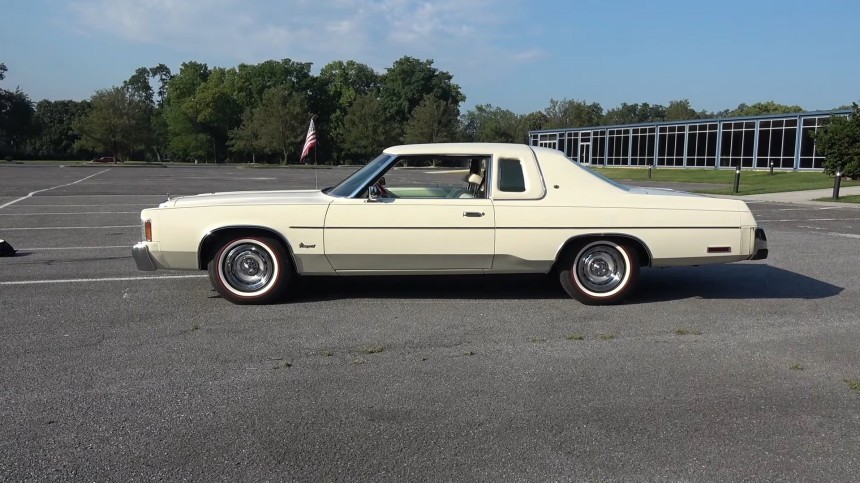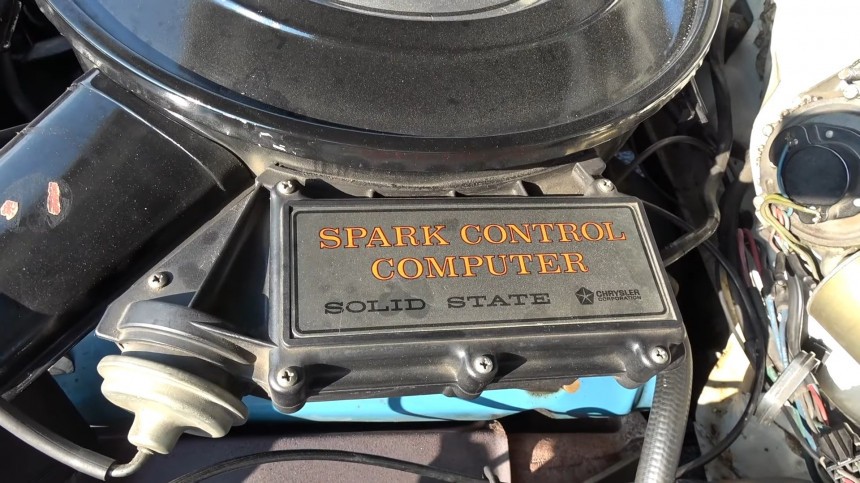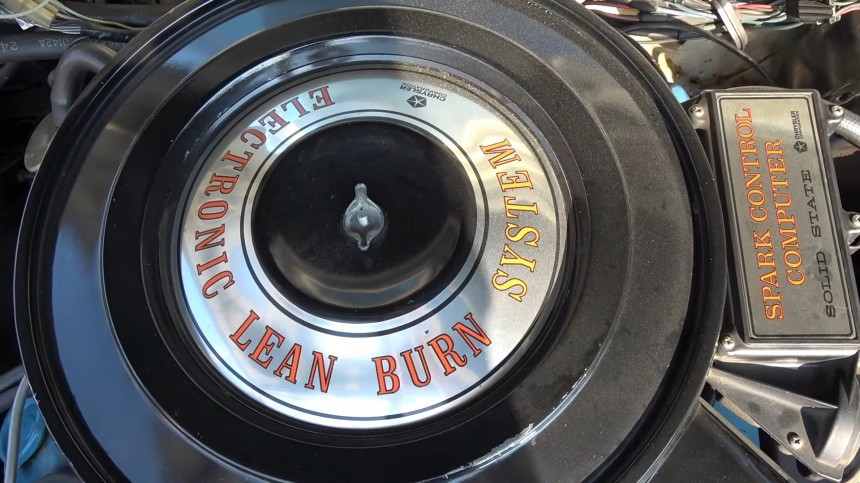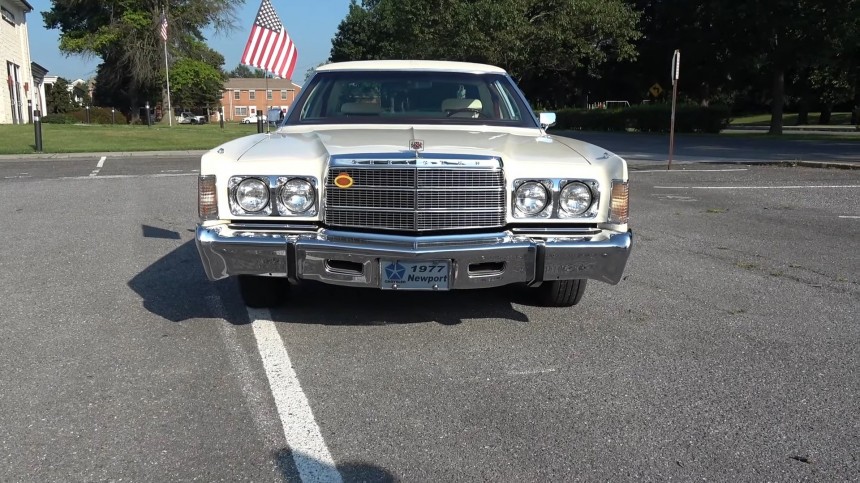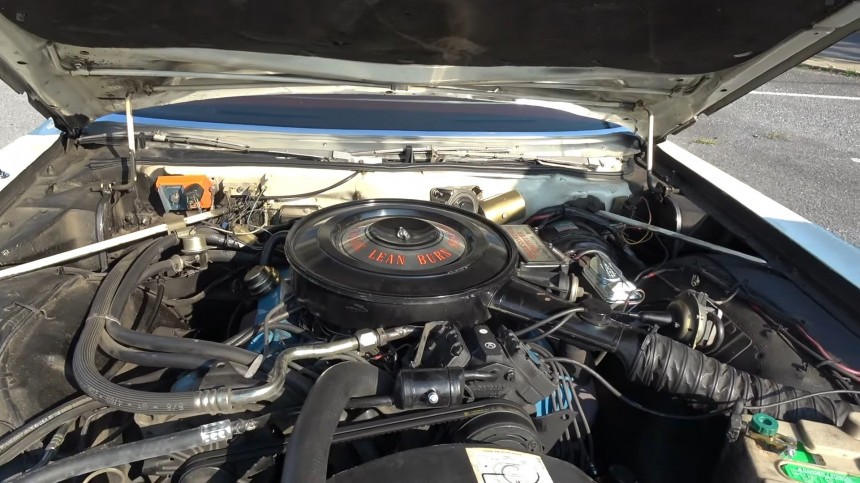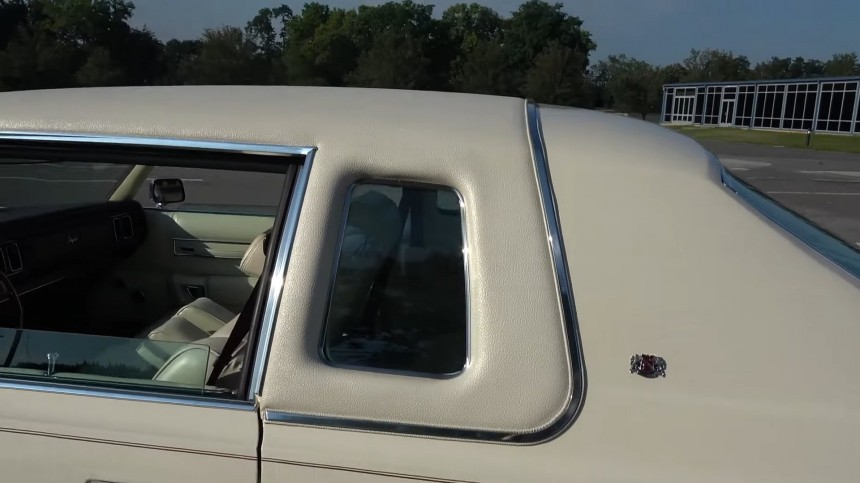In 1979, the United States Congress approved a 1.5-billion-dollar bailout for one of the nation’s top ten corporations and the smallest of Detroit’s Big Three. Chrysler’s CEO Lee Iacocca himself pleaded the Mopar cause in front of the politicians, and he got it. The carmaker begged for taxpayers’ money to make ends meet after a series of less fortunate strategic decisions during the seventies. Forty-four years later, one of those famously ill-fated cry-for-help reasons, a 1977 Chrysler Newport St. Regis, is a glorious symbol of an era.
Mother Mopar went straight against the current after the 1973 oil crisis, ditching the small-bodied Plymouth Barracuda and Dodge Challenger in favor of large, gas-guzzling luxo-cruisers. The timing couldn’t have been more uninspired when gas prices soared, emissions regulations gutted every ounce of performance, and technology threw a curve ball at the hesitant-batting carmaker.
The last sentence might sound like a false accusation, but Chrysler played a foot-in-mouth wildcard by betting on never-before-seen technology to save its bacon. The American company is now regarded as the forefather of the computerized automobile for its world-first electronic spark advance control system launched in 1976.
As space-age as it was (having been developed by the same engineers who also put it in space-braving rockets), the ‘computer’ turned out to be a double-edged sword that backfired badly (pun intended). The cars didn’t go down in history as Chrysler’s prodigal cash cows and became notorious for being a pain in the wallet.
The electronically-controlled Lean-Burn System, with its computer-timed spark control, consisted of eight sensors that fed the computer – nothing more than a circuit board mounted in a tiny box atop the air cleaner housing. (Read more about the Chrysler innovation in the attached .pdf brochure).
That proved a less-than-inspired choice because electronics – and particularly sensitive computers, no matter how primitive in shape – don’t like heat and vibrations. In the late seventies, the big V8s under Chrysler hoods still relied on explosive physics to spin the wheels. No matter how well-balanced the engines were, they still rattled and lost heaps of heat as combustion’s main by-product.
The computers suffered, and the mechanics didn’t have the required skill, expertise, or training to fix them (but a self-taught gearhead with a knack for electronics could do the job). The solder joints would become loose due to the two factors generated by the engine and the board’s unlucky positioning in the engine bay. Replacing the capacitors and redoing the soldering was the magical cure for the engine’s chronic seizures.
(The problem nagged all Chrysler cars with this system for some half-decade, and it almost caused a major PR catastrophe when Frank Sinatra – THAT Frank Sinatra – almost cut all ties with Lee Iacocca because one Chrysler automobile, the Imperial of 1981, had the same electronic-related issues with its injection system. Frank was the image of that automobile, which even came in a special Frank Sinatra Edition, but that didn’t solve the computer mishap).
The fix was to replace the computer-controlled complications with a tried and tested distributor, which many owners happily did. Buyers steered clear of the Electronic Lean-Burn because the tech hadn’t proven itself before its mass-scale introduction. However, some survivors from that age somehow – almost by magic – made it to this day to tell the story of those troubled times.
One of the most famous Chrysler models from the second half of the ill-fated seventies is the Newport, a badge that had been around since the 40s (with periodic absences) and lasted six generations, from 1950 to 1981. From 1965 onward, the Newport was pinned to the C-body platform, the full-size segment in Mopar’s internal hierarchy.
In 1974, the design shift of the entire C-body lineup saw the cars shed their fuselage profiles and adopt the unmistakable squared looks that would define those murky years well into the mid- and late-eighties. True to their land yacht proportions, the vehicles were among the heavyweights of their time – and of Chrysler’s history.
It is a small wonder, considering the real estate of metal slabs required to assemble the colossal cars. With 124-inch wheelbases and 226-inch overall lengths (3,150 mm and 5,740 mm, respectively), a Newport (or its even longer cousin, the New Yorker) was hardly discrete. The flashy chrome ornaments didn’t help with camouflage, either.
The age of these C-body giants would end in 1978 when the nameplates were relocated to the R platform. But one of the last colossi, a Chrysler Newport from 1977, has made it to 2023 without a scratch. Computer included – and functional, as we can see in the video.
Owned by a happy gearhead – Don Hein – since 2015, this car has a bit of a nostalgic story to it. Mr. Hein initially laid eyes on this automobile in 2003, but he couldn’t persuade the then-proprietor to strike a deal. However, he got a promise that, should the car ever be put up for sale, he would have priority.
A dozen years went by, and lo and behold, one day, Don’s telephone rang. A voice at the other end informed him that the Newport was looking for a new owner. True to his word, the seller called Don Hein 12 years after he first inquired about the Chrysler. The car is all original and has never been altered– except for an upgrade of the sound system and two other details (which I’ll convey in the following paragraphs). Namely, the factory-installed optional 8-track stereo has been replaced by a period-correct tape cassette player.
This particular two-door hardtop has the St. Regis package, which is why it boasts the white vinyl boar-grain top and the opera window in the rear pillar. It also has the standard 400-cubic-inch (6.6-liter) V8 with the aforementioned computer strapped on it and the three-speed automatic. The engine was installed in all Newports except those sold in California and high-altitude locations (over 4,000 feet – 1,200 meters).
Alternatively, buyers could opt for the 360-cube (5.9-liter) or the range-topping 440-CID (72-liter) V8s, but the performance wasn’t dramatically different, as the displacement would imply. The run-of-the-mill 400 produced 195 net hp (198 PS) and 305 lb-ft of torque (542 Nm). The biggest motor added only five extra hp and fifteen lb-ft, for 200 hp and 320 lb-ft (203 PS, 434 Nm).
A single carburetor with four barrels and a compression ratio capped at 8.2:1 wasn’t the most exciting news Chrysler ever brought to its customers, but it was what it was. And there was a big reason for the 26.5-gallon fuel tank (100-liter): 11 mpg (21.4 l/100 km) fuel consumption wasn’t the car’s best-selling forte.
When new, a Newport started at $5,375 – a middle-of-the-road price between the four-door sedan listed at $5,280 and the four-door hardtop ($5,435). The two-door hardtop – like the one in this story – had a production run of 10,566 examples, the lowest for the model year Newport. The sedan got more than half of all production, with 32,506, while the four-door pillarless body came In 14,808 units.
When this time capsule from 1977 was sold to Don Hein, it was at its second owner, who acquired it with only 15,000 miles (24,000 km or thereabout) on the clock. Twelve years after that moment, the car appeared for sale on a website, with 21,800 miles (35,000 km), for $14,500. Now, it has some 35,500 miles (57k clicks).
The car, as ordered new in 1977, cost an eyebrow-raising $8,397.60 and had everything on the list short of power windows. The reason for this perfection-bruising element would be the original owner’s grandkids. The lady who first bought – or used – it didn’t want her grandchildren playing with the windows, so she opted for the cranks. Otherwise, this car has every option, from cruise control to A/C, tilt-telescopic steering wheel, and dual six-way power seats.
Earlier, I mentioned that, apart from the cassette player, two more details are not factory-installed: the dual exhaust (currently, the 400 breathes through a Flow Master system – hear it in the video) and the Mopar Performance electronic ignition. This last bit eliminated the troublesome “lean burn” installed initially, and that’s probably the main reason this survivor 1977 Chrysler Newport St. Regis is still very much alive and kicking now.
The last sentence might sound like a false accusation, but Chrysler played a foot-in-mouth wildcard by betting on never-before-seen technology to save its bacon. The American company is now regarded as the forefather of the computerized automobile for its world-first electronic spark advance control system launched in 1976.
As space-age as it was (having been developed by the same engineers who also put it in space-braving rockets), the ‘computer’ turned out to be a double-edged sword that backfired badly (pun intended). The cars didn’t go down in history as Chrysler’s prodigal cash cows and became notorious for being a pain in the wallet.
That proved a less-than-inspired choice because electronics – and particularly sensitive computers, no matter how primitive in shape – don’t like heat and vibrations. In the late seventies, the big V8s under Chrysler hoods still relied on explosive physics to spin the wheels. No matter how well-balanced the engines were, they still rattled and lost heaps of heat as combustion’s main by-product.
The computers suffered, and the mechanics didn’t have the required skill, expertise, or training to fix them (but a self-taught gearhead with a knack for electronics could do the job). The solder joints would become loose due to the two factors generated by the engine and the board’s unlucky positioning in the engine bay. Replacing the capacitors and redoing the soldering was the magical cure for the engine’s chronic seizures.
The fix was to replace the computer-controlled complications with a tried and tested distributor, which many owners happily did. Buyers steered clear of the Electronic Lean-Burn because the tech hadn’t proven itself before its mass-scale introduction. However, some survivors from that age somehow – almost by magic – made it to this day to tell the story of those troubled times.
One of the most famous Chrysler models from the second half of the ill-fated seventies is the Newport, a badge that had been around since the 40s (with periodic absences) and lasted six generations, from 1950 to 1981. From 1965 onward, the Newport was pinned to the C-body platform, the full-size segment in Mopar’s internal hierarchy.
It is a small wonder, considering the real estate of metal slabs required to assemble the colossal cars. With 124-inch wheelbases and 226-inch overall lengths (3,150 mm and 5,740 mm, respectively), a Newport (or its even longer cousin, the New Yorker) was hardly discrete. The flashy chrome ornaments didn’t help with camouflage, either.
The age of these C-body giants would end in 1978 when the nameplates were relocated to the R platform. But one of the last colossi, a Chrysler Newport from 1977, has made it to 2023 without a scratch. Computer included – and functional, as we can see in the video.
A dozen years went by, and lo and behold, one day, Don’s telephone rang. A voice at the other end informed him that the Newport was looking for a new owner. True to his word, the seller called Don Hein 12 years after he first inquired about the Chrysler. The car is all original and has never been altered– except for an upgrade of the sound system and two other details (which I’ll convey in the following paragraphs). Namely, the factory-installed optional 8-track stereo has been replaced by a period-correct tape cassette player.
This particular two-door hardtop has the St. Regis package, which is why it boasts the white vinyl boar-grain top and the opera window in the rear pillar. It also has the standard 400-cubic-inch (6.6-liter) V8 with the aforementioned computer strapped on it and the three-speed automatic. The engine was installed in all Newports except those sold in California and high-altitude locations (over 4,000 feet – 1,200 meters).
A single carburetor with four barrels and a compression ratio capped at 8.2:1 wasn’t the most exciting news Chrysler ever brought to its customers, but it was what it was. And there was a big reason for the 26.5-gallon fuel tank (100-liter): 11 mpg (21.4 l/100 km) fuel consumption wasn’t the car’s best-selling forte.
When new, a Newport started at $5,375 – a middle-of-the-road price between the four-door sedan listed at $5,280 and the four-door hardtop ($5,435). The two-door hardtop – like the one in this story – had a production run of 10,566 examples, the lowest for the model year Newport. The sedan got more than half of all production, with 32,506, while the four-door pillarless body came In 14,808 units.
The car, as ordered new in 1977, cost an eyebrow-raising $8,397.60 and had everything on the list short of power windows. The reason for this perfection-bruising element would be the original owner’s grandkids. The lady who first bought – or used – it didn’t want her grandchildren playing with the windows, so she opted for the cranks. Otherwise, this car has every option, from cruise control to A/C, tilt-telescopic steering wheel, and dual six-way power seats.
Earlier, I mentioned that, apart from the cassette player, two more details are not factory-installed: the dual exhaust (currently, the 400 breathes through a Flow Master system – hear it in the video) and the Mopar Performance electronic ignition. This last bit eliminated the troublesome “lean burn” installed initially, and that’s probably the main reason this survivor 1977 Chrysler Newport St. Regis is still very much alive and kicking now.
